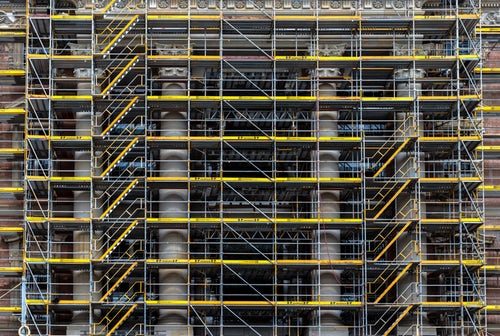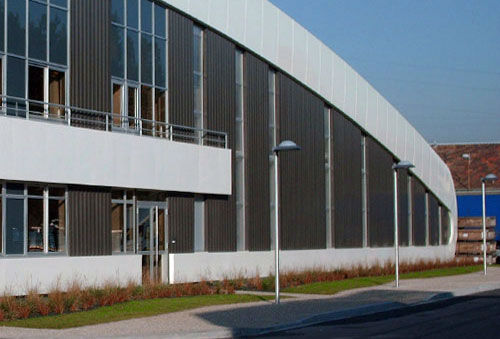In the construction industry, staying on budget is essential for the success of any project. As a result, finding ways to cut costs without compromising the quality of the project is of utmost importance. In this article, we will dive into several proven strategies to help you reduce expenses and streamline your construction process. By implementing these techniques, you will be able to maximize efficiency, save money, and ensure a successful project outcome. Whether you are a seasoned construction professional or just starting your first project, these tips will help you manage your budget and make the most of your resources.
Efficient Design and Planning
A crucial factor in controlling construction costs is having a well-thought-out design and planning phase. By investing time and effort upfront, you can save both time and money down the line. An efficient design will minimize wasted space and resources, while proper planning will ensure that every aspect of the project is accounted for and budgeted.
Use Building Information Modeling (BIM) Software
Utilizing Building Information Modeling (BIM) software is an effective way to streamline the design and planning process. BIM allows you to create a 3D model of your project, which provides a detailed and accurate representation of the final product. This helps to identify any potential issues or conflicts before construction even begins, reducing the likelihood of costly mistakes and delays.
Standardize and Optimize Designs
Standardizing your designs and incorporating modular components can save both time and money. By using standardized materials and components, you can reduce the need for custom fabrication and take advantage of economies of scale. Additionally, optimizing your designs for energy efficiency and materials usage can result in significant savings on utility bills and material costs.
Selecting the Right Materials
The materials you choose for your construction project can have a significant impact on the overall costs. By carefully considering the most suitable materials for your project, you can save money without compromising on quality or durability.
Compare Material Costs and Performance
Before selecting materials for your project, it’s essential to compare their costs and performance. This includes not only the initial purchase price but also long-term maintenance and replacement costs. For example, while a specific material may have a higher upfront cost, its longevity and low maintenance requirements could result in overall savings.
Use Local and Sustainable Materials
Using locally sourced and sustainable materials can help reduce transportation costs and support the local economy. Additionally, sustainable materials often have longer lifespans, which can reduce the need for replacement and maintenance over time.
Streamline Construction Processes
Effective management of your construction project’s timeline can result in significant cost savings. By implementing efficient workflows and optimizing your team’s performance, you can complete your project on time and within budget.
Implement Lean Construction Practices
Lean construction practices focus on eliminating waste and inefficiencies in the construction process, resulting in time and cost savings. Examples of lean practices include just-in-time delivery of materials, minimizing waste in design and fabrication, efficient labor management, and continuous improvement.
Use Technology to Improve Efficiency
Incorporating construction management software, communication tools, and other technology solutions can help streamline your project and improve efficiency. These tools can help you track progress, manage resources, and identify potential issues before they become costly problems.
Manage Labor Costs
Labor is one of the most significant expenses in any construction project, so effectively managing these costs is essential. By implementing strategies to optimize your team’s performance, you can reduce labor expenses without sacrificing quality.
Hire Skilled and Experienced Workers
While it may be tempting to save money by hiring less experienced workers, skilled and experienced labor can actually help reduce overall costs. Experienced workers can complete tasks more efficiently, reducing the amount of time and resources needed for the project.
Provide Adequate Training and Support
Investing in training and support for your team will not only help to improve their skills and productivity but also increase overall job satisfaction. This, in turn, can result in lower turnover rates and reduced recruitment and training costs.
Monitor and Control Your Budget
Finally, it’s essential to closely monitor and control your construction project’s budget throughout its duration. By carefully tracking expenses and making data-driven decisions, you can ensure that your project stays on course and within budget.
Conduct Regular Budget Reviews
Regularly reviewing your budget and comparing it to your project’s actual expenses can help you identify any discrepancies and adjust your spending accordingly. This will enable you to make informed decisions about resource allocation and avoid potential budget overruns.
Use Cost Estimation Tools
Utilizing cost estimation tools and software can help you create accurate budget estimates and track expenses throughout the project. By having a clear understanding of the costs involved in each aspect of your construction project, you can make better decisions about where to allocate resources to achieve the best results.
In conclusion, cutting costs on a construction project involves a combination of efficient design and planning, carefully selecting materials, streamlining construction processes, managing labor costs, and monitoring and controlling your budget. By implementing these strategies, you will save money and ensure a successful project outcome.
Adopt Energy-Efficient Practices and Technologies
Integrating energy-efficient practices and technologies into your construction project can result in long-term savings on utility bills and contribute to a more sustainable construction industry. By considering energy efficiency in both the design and construction phases, you can reduce waste and make the most of available resources.
Implement Green Building Standards
Adopting green building standards, such as LEED or BREEAM certification, can lead to cost savings through reduced energy and resource consumption. These certifications encourage the use of energy-efficient technologies and environmentally friendly materials, which can result in reduced operating expenses and a higher return on investment for building owners.
Invest in Energy-Efficient Equipment
Utilizing energy-efficient equipment, such as LED lighting and high-efficiency HVAC systems, can help to reduce long-term energy costs. Additionally, incorporating renewable energy sources, such as solar panels or wind turbines, can further reduce reliance on non-renewable energy and contribute to long-term savings.
Maintain Open Communication with Stakeholders
Transparent and open communication with all stakeholders involved in the construction project is essential to keeping costs under control. By maintaining a clear line of communication, you can ensure that everyone is on the same page and that potential issues are addressed promptly, avoiding costly delays or changes.
Foster Collaborative Decision-Making
Involve all stakeholders in the decision-making process to ensure that everyone’s input is considered and that the most cost-effective solutions are implemented. This collaborative approach can lead to more efficient decision-making and help to avoid misunderstandings or miscommunications that could result in unnecessary expenses.
Establish Clear Expectations and Milestones
Set clear expectations and milestones for each stage of the construction project and communicate these to all stakeholders. This will help to ensure that everyone is working towards the same goals and that any potential issues or delays can be addressed promptly before they become costly problems.
Cutting costs in a construction project involves a comprehensive approach that includes efficient design and planning, careful material selection, streamlined construction processes, effective labor management, and ongoing budget monitoring. Additionally, adopting energy-efficient practices and technologies and maintaining open communication with stakeholders can contribute to further cost savings. By implementing these strategies, you can save money and ensure a successful project outcome while maintaining the quality and integrity of your construction project.

